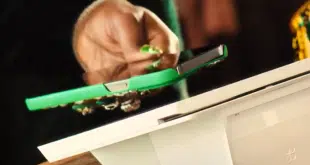Benefitting from a built-in customer connection, retailer wallets adroitly tap into shoppers’ purchasing habits in ways unavailable to the big tech wallets.
Retailer mobile wallets are proliferating in part because the consumer can get something that she can’t with any of the tech-based apps. That is a high degree of personalization that not only includes payment preferences, but also the ability to earn loyalty points, receive special offers, and redeem rewards.
Consider the sheer volume of them now. The Starbucks Corp. wallet, which debuted in 2010, may get a lot of recognition because of its success, but other heavy hitters have joined the fray. Walmart Inc.’s Walmart Pay has been available since 2016, the same year CVS Pay from CVS Health Corp. and Kohl’s Pay from Kohl’s Corp. emerged.
A slew of others belong to this club, too. ExxonMobil Corp. launched its Speedpass+ app in 2016, along with many other fuel retailers. Fuel companies Phillips 66, Gulf Oil, Shell Oil, and BP each have their own apps, many of which have built-in loyalty-earning and offer-redemption capabilities.
While many retailers accommodate the tech-based wallets, such as Apple Pay, Google Pay, and Samsung Pay, their own marketing and development resources are devoted to furthering adoption of their own wallets.
That’s because retailer wallets have a distinct advantage over the tech-based ones: shoppers often are more willing to share their shopping behavior in exchange for rewards and offers. While the tech-based wallets have added loyalty features, the depth of these integrations typically is not as detailed as it is with their retailer counterparts.
The ‘Secret Sauce’
Anywhere from 10% to 15% of users of tech-based wallets actually use them for mobile payments, says Krista Tedder, director of payments at Javelin Strategy & Research, a Pleasanton, Calif.-based firm. But “retailer wallets have a higher usage rate, getting closer to 20%,” Tedder says.
In one example, Walmart Pay is adding 10,000 new users per day and has nearly as many active users—31 million—as Apple Pay’s 32 million, according to projections from Crone Consulting LLC, an independent research firm. An active user is a consumer who makes at least two transactions per month with the wallet.
“They are more successful than the casual observer knows, especially the casual observer in payments,” says Richard Crone, founder of Crone Consulting. “The reason is it’s been used to create a competitive advantage to retailers and retailers aren’t going to share their secret sauce to their own peril.”
That “secret sauce,” he adds, is the customer-relationship management aspect of the merchant wallets. It’s the connection between the consumer’s shopping behavior and the retailer’s marketing department. It’s the ability to create messaging that engages and persuades the consumer.
“Rewards, offers, and loyalty promotions are extremely effective in motivating usage,” Crone says. “A great example is the launch this year of petroleum fueling apps from BP, Shell, and 76 [ConocoPhillips]. These three and many others in the fuel category have launched their own branded mobile apps with mobile payments fully integrated with their existing loyalty programs. To drive adoption of the apps, they included supplemental discounts on fuel purchases using their branded apps.”
Others have long offered that integration. Walgreen Co. enabled the ability to redeem its Balance Rewards loyalty points in 2015, which made it the first retailer to offer that capability, a year after Apple Pay debuted.
When Javelin researched why adoption of tech-based wallets hadn’t been stronger, it found two primary causes. “The first is consumers,” Tedder says. “When we asked them what they wanted in a mobile application, payments were near the bottom.”
One reason for that is how well-trained consumers are already to pull out a card and swipe it on, or dip it in, a reader, Tedder says. “It’s a frictionless behavior,” she says. And, plenty of consumers don’t see the value in using a mobile wallet, especially when using a card is easier.
The other factor limiting general-purpose mobile wallet use is that many consumers aren’t sure where they can use one, Tedder says. “I can’t say how many times I’ve asked a clerk if they take Google Pay and they don’t know,” she says.
And, while the card brands agreed on a radio-wave symbol to indicate contactless acceptance for cards and smart phones, many consumers are unsure where the reader is located on point-of-sale terminals.
Throw in general consumer anxiety about the security of mobile payments—some 38% in a recent PSCU survey said security concerns held them back from using mobile payments—and the situation worsens, Tedder says.
The ‘Gold Standard’
So how do the retailer wallets get around these concerns? After all, many of them use technology like bar codes that may not be as new and interesting as encrypting card numbers and tokenization. The reason lies in the data connection.
“The gold standard of how to get customers to use mobile is Starbucks,” Tedder says. “It’s very easy.” Starbucks creates games, or challenges, within its app to drive repeat behavior. One, labeled Star Streak, encourages users to collect up to 100 bonus stars (125 earns a free drink) by making a purchase on six consecutive days by the game’s conclusion. Such challenges require the consumer to pay with their Starbucks app.
“Where I would normally not go back, they’re sending me reminders to come in and get discounts and keep coming back,” Tedder says. “Merchants have a unique advantage that Apple Pay, Samsung Pay, and Google Pay don’t have in that they have a closed ecosystem. If I take Google Pay somewhere I don’t know if I can pay.”
The card brands have been hard at work trying to alleviate that situation. As the payments industry converted to EMV credit and debit cards, merchants installed new point-of-sale terminals, most of which have contactless payments capability built in. In September, Visa Inc. said 50% of its face-to-face transactions happened at contactless-enabled merchant locations as of June 30. It also said 95% of the POS terminals being shipped were contactless-capable.
While efforts to make smart-phone-based wallet acceptance ubiquitous have had success, they might have greater success if merchants actually activated the contactless technology in the terminals. Many of the retailer wallets only work with bar codes, which don’t require additional cashier training.
Retailers know this, and some take advantage of it when developing their apps.
“These mobile-payment apps eliminated the separate step of first scanning a retailer loyalty card before dipping a payment card and providing your ZIP code or PIN,” Crone says. “Now, in a single step the consumer opens the fuel retailer’s app with biometric authentication such as Face ID or Touch ID, and it automatically activates the pump, applies the loyalty-program discount, and the consumer is given loyalty credit for the purchase.”
Such deep integration is possible because of the close connection between the retailer and the consumer, he says. “The way to compete is to move to a CRM-based model where you know who the customer is,” Crone says. That ensures services, such as order-ahead and pick-up-later, or scan-and-go technology, are available to consumers.
‘Fighting Chance’
This is what makes retailer wallets stand out against the big budgets and clever technology of the tech wallets. “Those are features retailers must put in place to have a fighting chance to come against Amazon Go,” Crone says.
He forecasts that mobile wallets will need to adapt to Amazon.com Inc.’s nascent brick-and-mortar presence to remain competitive. Amazon Go is the online giant’s attempt to get in-store sales. Payment is done via the consumer’s Amazon account in the Amazon app.
“Amazon Go will change the face of retail in every merchant category,” Crone says. “Customers shopping at Amazon Go regularly have become dependent on the service and the merchandising is unique there. It is prepared foods—those SKUs that command the high volume and frequency in the grocery category.”
More Amazon Go locations could pose problems for grocers, he says. “Grocery stores have always considered themselves as competing against quick-serve restaurants. Now, the average American household purchases more food from QSRs and in the prepared-food categories than they spend on food inside their own homes.” Grocers with their own apps, or developing ones, will need to incorporate this social dynamic, he says
It’s not an issue unique to grocers. Every retailer has to consider this consumer desire for convenience and making transactions easier. “The way to compete without having to reconfigure everything is buy-online, pickup-in-store. In that case, the retailer is not even making customers enter aisles, but the cost upsell has to start and be initiated in the retailer’s app,” Crone says.
How that gets done is by leveraging payments companies. Retailers that enable consumers to register with existing payments accounts, like ones they might have with PayPal Holdings Inc., benefit from getting not only the customer’s name, but billing and shipping addresses. It can be the trigger to making the retailer’s customer-relationship management system that much more effective, Crone says.
“The real first move is payment registration,” he says. “This is where the tech wallet and retailer wallet ally, if not enhancing each other. If the name of the game is CRM and to get CRM you need to register a payment credential, the retailer doesn’t care where that comes from. However they can register the customer’s payment credential, they’ll do it.”
‘It’s About the Experience’
The future will also feature the debut of more retailer wallets, especially those with payments capability, says Tedder.
That’s because retailers want to direct consumers to favored payment methods as much as possible. Target Corp.’s wallet, for example, only lets users pay with one of the chain’s proprietary cards.
Retailer wallets also may adopt faster-payments capability, if a speedy settlement service that’s potentially less expensive than cards finds broader adoption, she says.
Ultimately, consumer adoption of mobile wallets comes down to engagement. “Each company has to look at what their business model currently is and how to modify it,” Tedder says. “The more you can get the engagement, the better the experience and more likely they are to return. It’s more about the experience than how do I pay for this.”





